Abstract
1. A strain of the fungus Fusarium solani able to use benzonitrile as sole source of carbon and nitrogen was isolated by elective culture. 2. Respiration studies indicate that the nitrile, after degradation to benzoate, is catabolized via catechol or alternatively via p-hydroxybenzoate and 3,4-dihydroxybenzoate. 3. Cell-free extracts of benzonitrile-grown cells contain an enzyme mediating the conversion of benzonitrile into benzoate and ammonia. 4. The nitrilase enzyme was purified by DEAE-cellulose chromatography, (NH4)2SO4 precipitation and gel filtration on Sephadex G-200. The homogeneity of the purified enzyme preparation was confirmed by sodium dodecyl sulphate/polyacrylamide-gel electrophoresis and isoelectric focusing on polyacrylamide gel. 5. The enzyme showed a broad pH optimum between pH7.8 and 9.1 and a Km with benzonitrile as substrate of 0.039mm. The activation energy of the reaction deduced from an Arrhenius plot was 48.4kJ/mol. 6. The enzyme was susceptible to inhibition by thiol-specific reagents and certain heavy metal ions. 7. Gel filtration gave a value of 620000 for the molecular weight of the intact enzyme. Sodium dodecyl sulphate/polyacrylamide-gel electrophoresis demonstrated that the enzyme was composed of eight subunits of mol.wt. 76000. 8. Rates of enzymic attack on various substrates indicated that the nitrilase has a fairly broad specificity and that the fungus probably plays an important role in the biodegradation of certain nitrilic herbicides in the environment.
Full text
PDF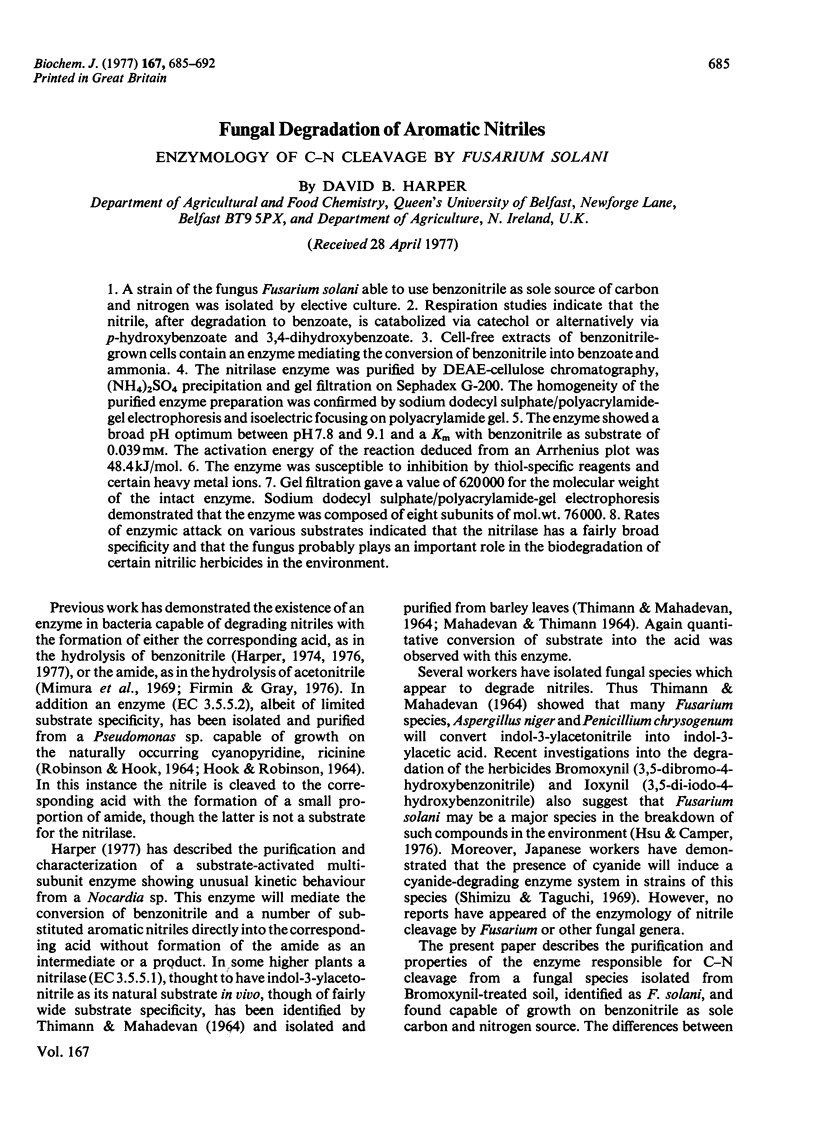
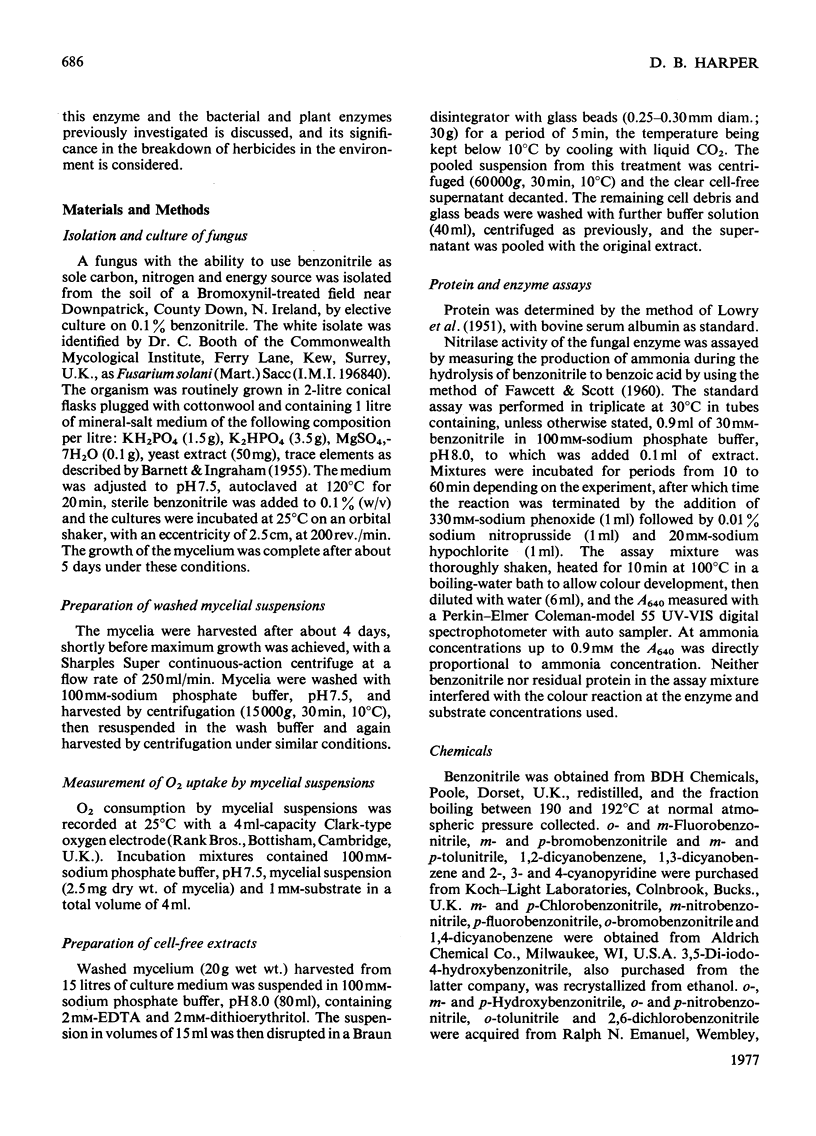

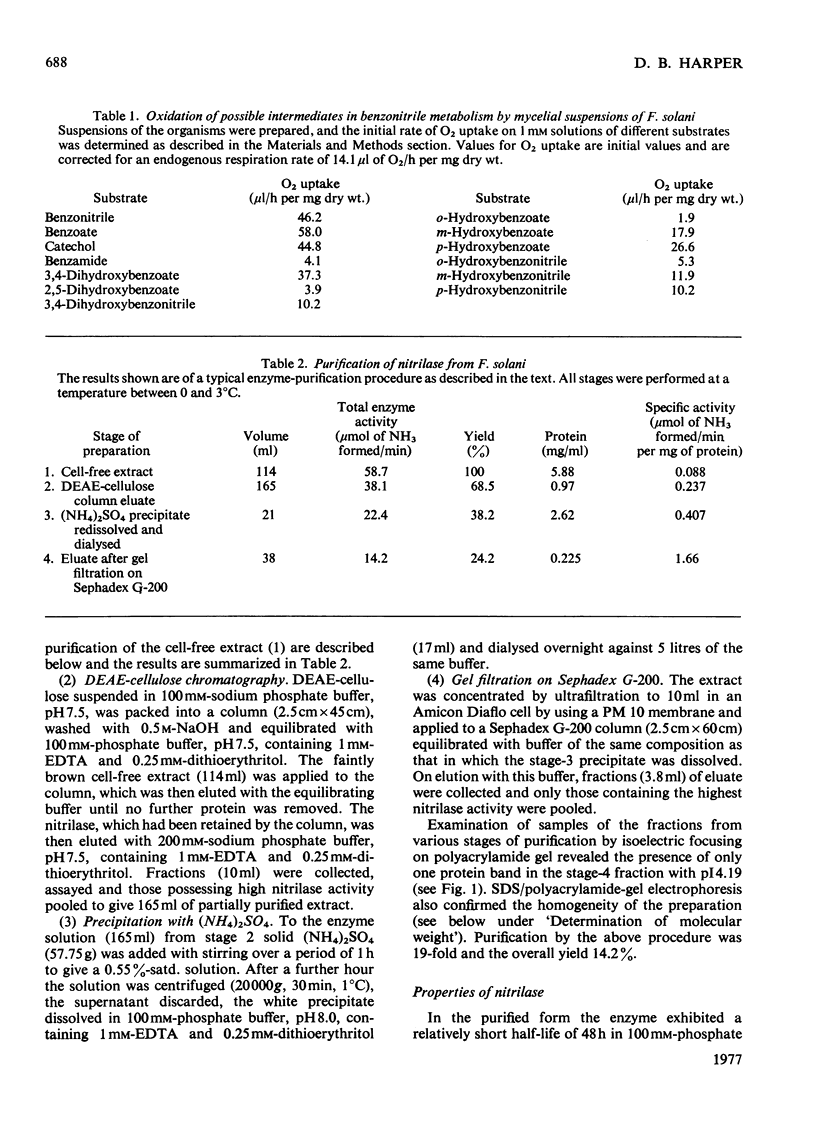
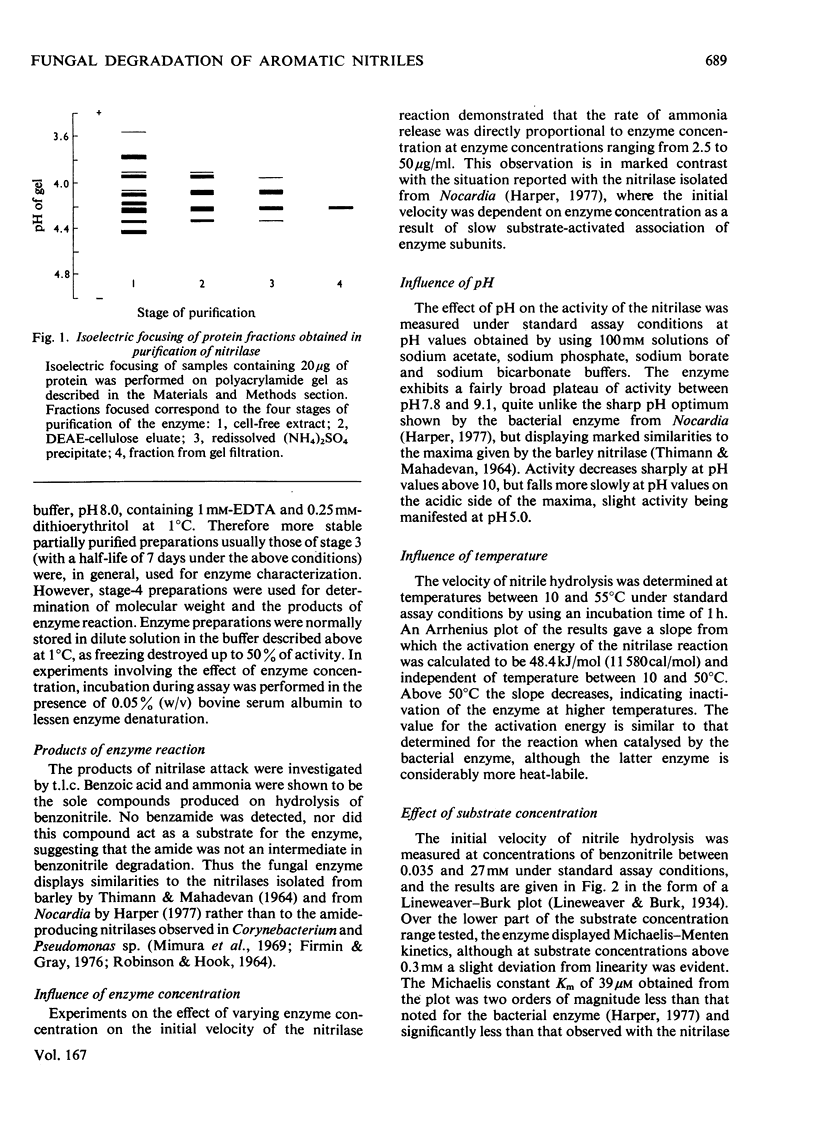
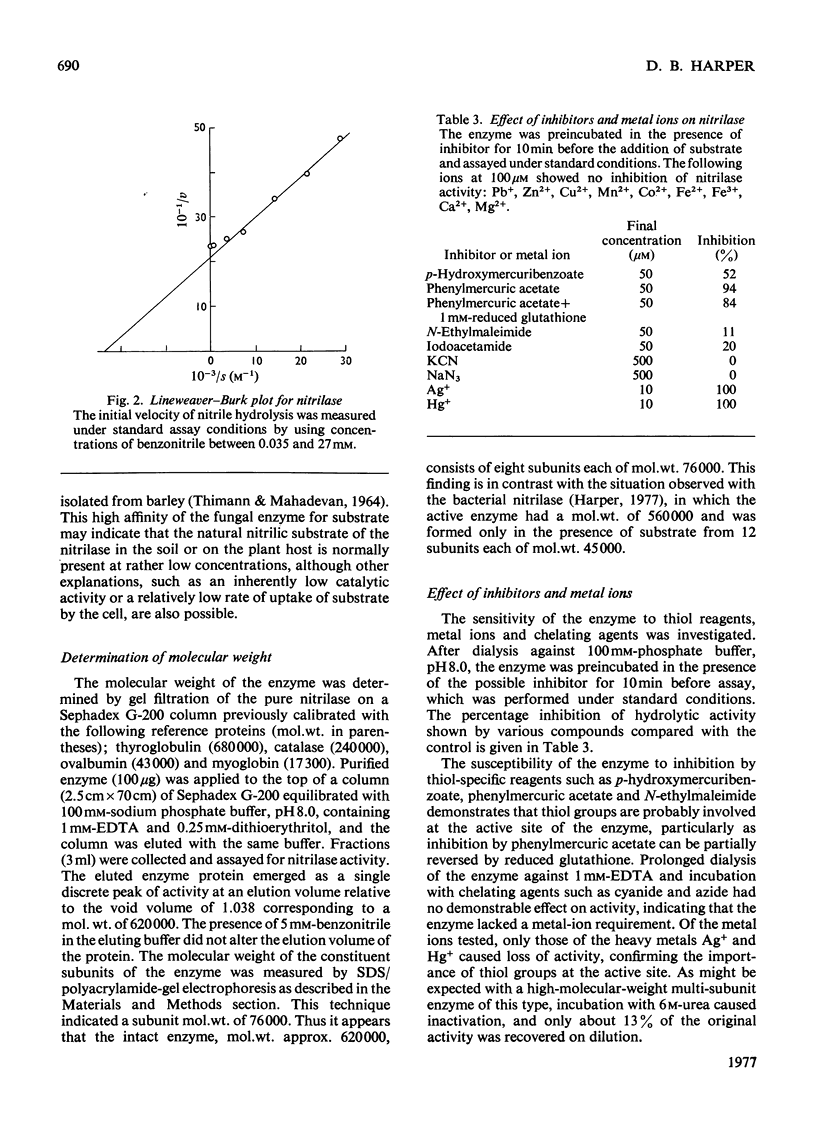


Selected References
These references are in PubMed. This may not be the complete list of references from this article.
- FAWCETT J. K., SCOTT J. E. A rapid and precise method for the determination of urea. J Clin Pathol. 1960 Mar;13:156–159. doi: 10.1136/jcp.13.2.156. [DOI] [PMC free article] [PubMed] [Google Scholar]
- Firmin J. L., Gray D. O. The biochemical pathway for the breakdown of methyl cyanide (acetonitrile) in bacteria. Biochem J. 1976 Aug 15;158(2):223–229. doi: 10.1042/bj1580223. [DOI] [PMC free article] [PubMed] [Google Scholar]
- HOOK R. H., ROBINSON W. G. RICININE NITRILASE. II. PURIFICATION AND PROPERTIES. J Biol Chem. 1964 Dec;239:4263–4267. [PubMed] [Google Scholar]
- Harper D. B. Microbial metabolism of aromatic nitriles. Enzymology of C-N cleavage by Nocardia sp. (Rhodochrous group) N.C.I.B. 11216. Biochem J. 1977 Aug 1;165(2):309–319. doi: 10.1042/bj1650309. [DOI] [PMC free article] [PubMed] [Google Scholar]
- Harper D. B. Purification and properties of an unusual nitrilase from Nocardia N.C.I.B. 11216. Biochem Soc Trans. 1976;4(3):502–504. doi: 10.1042/bst0040502. [DOI] [PubMed] [Google Scholar]
- Hsu J. C., Camper N. D. Isolation of ioxynil degraders from soil-enrichment cultures. Can J Microbiol. 1976 Apr;22(4):537–543. doi: 10.1139/m76-080. [DOI] [PubMed] [Google Scholar]
- Jamaluddin M., Rao P. V., Vaidyanathan C. S. Involvement of the protocatechuate pathway in the metabolism of mandelic acid by Aspergillus niger. J Bacteriol. 1970 Mar;101(3):786–793. doi: 10.1128/jb.101.3.786-793.1970. [DOI] [PMC free article] [PubMed] [Google Scholar]
- LOWRY O. H., ROSEBROUGH N. J., FARR A. L., RANDALL R. J. Protein measurement with the Folin phenol reagent. J Biol Chem. 1951 Nov;193(1):265–275. [PubMed] [Google Scholar]
- MAHADEVAN S., THIMANN K. V. NITRILASE. II. SUBSTRATE SPECIFICITY AND POSSIBLE MODE OF ACTION. Arch Biochem Biophys. 1964 Jul;107:62–68. doi: 10.1016/0003-9861(64)90269-3. [DOI] [PubMed] [Google Scholar]
- ROBINSON W. G., HOOK R. H. RICININE NITRILASE. I. REACTION PRODUCT AND SUBSTRATE SPECIFICITY. J Biol Chem. 1964 Dec;239:4257–4262. [PubMed] [Google Scholar]
- THIMANN K. V., MAHADEVAN S. NITRILASE. I. OCCURRENCE, PREPARATION, AND GENERAL PROPERTIES OF THE ENZYME. Arch Biochem Biophys. 1964 Apr;105:133–141. doi: 10.1016/0003-9861(64)90244-9. [DOI] [PubMed] [Google Scholar]
- Vesterberg O. Isoelectric focusing of proteins in polyacrylamide gels. Biochim Biophys Acta. 1972 Jan 26;257(1):11–19. doi: 10.1016/0005-2795(72)90248-6. [DOI] [PubMed] [Google Scholar]


